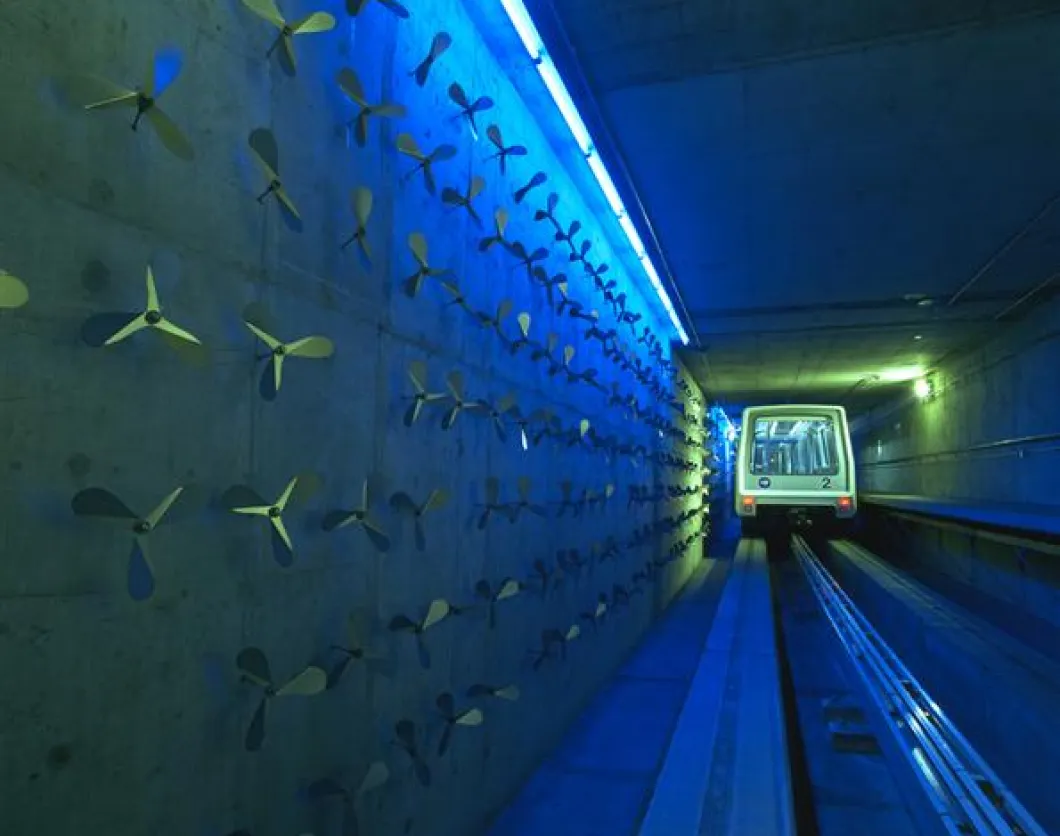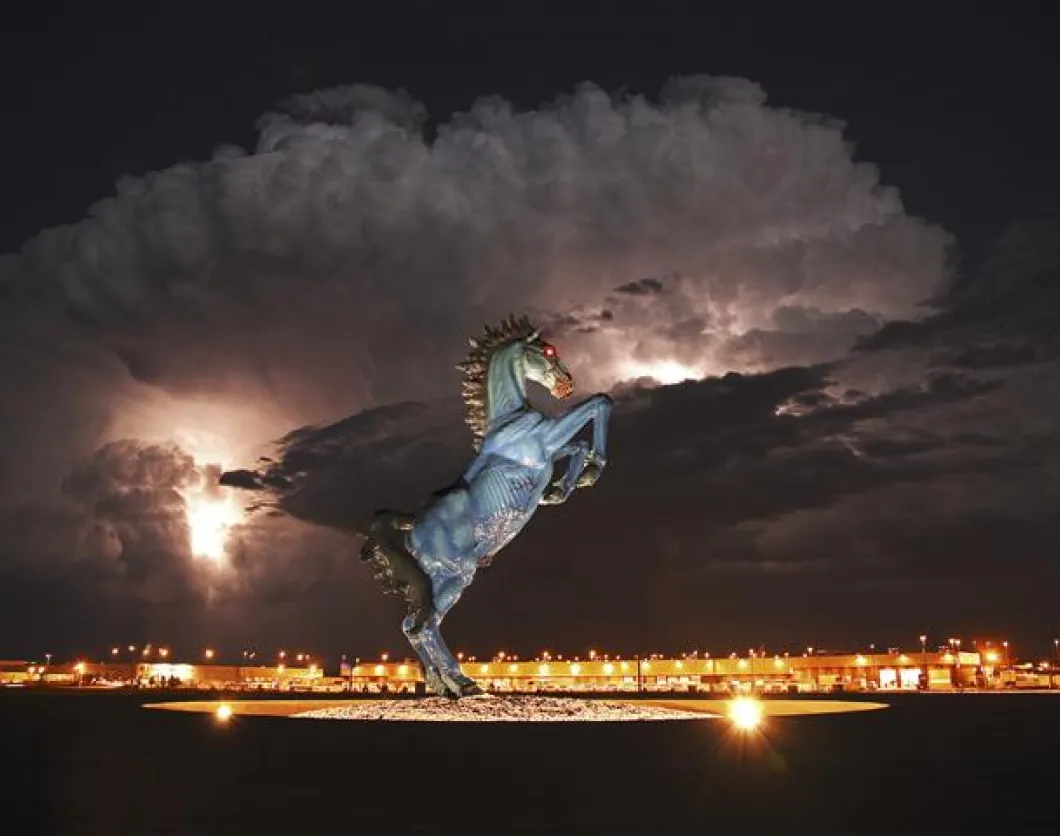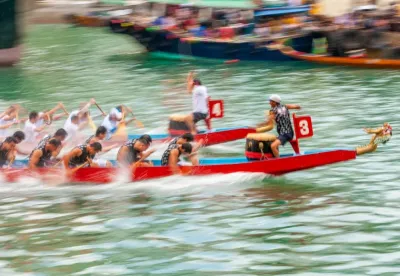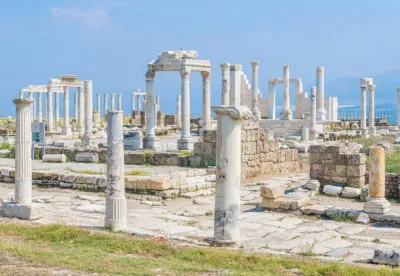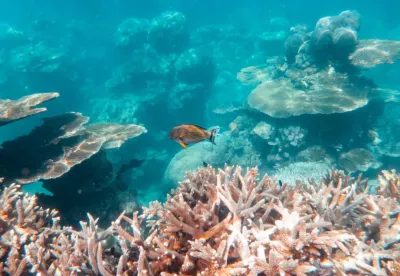Denver International Airport (DEN) is not only the gateway to Colorado and the Rocky Mountains, but is also a grand public space of the American West. Visitors and passengers are in for a unique experience when they travel through Denver. With one of the largest public art collections of almost any airport in the world, DEN’s public art program features around 30 site-specific works created by 39 artists and includes sculptures, murals and installations.
Works run the gamut from a high-tech archway of neon color and light that reflects Colorado’s Native American storytelling heritage to a rotating collection of temporary exhibits that feature new and well-known Colorado and regional artists.
While Denver International Airport is the newest major airport in the United States with an innovative design that is still cutting edge 15 years after the airport opened in 1995, it draws on a long tradition of public architecture and public art. The planners who created DEN took their inspiration from the plazas, town squares and markets of Europe and Asia, which for centuries have melded form and function by making beauty as critical to the use of the space as practicality.
Support for the arts has a strong tradition in Denver, and the airport is one of the many public spaces that has benefitted from a 1991 ordinance created by then-Mayor, Wellington E. Webb. The ordinance ensures continued funding and implementation of art for public spaces, and a city that was once known more for its infamous Wild West past has become a vibrant cultural center of the New West.
Planning the public art program started years before Denver International Airport opened in 1995. The public art program at DEN was the largest fully integrated art project of its kind in the world back in the early 1990s, with 15 artists commissioned to create works of art for the new airport at the very beginning of the design process. These artists were encouraged to integrate artworks into the actual structure and systems of the building. Airport planners worked together with these artists to conceptualize a public art program at Denver International Airport that resulted in a collection including close to 40 permanent works of completely unique, site-specific art.
Murals punctuate open spaces throughout Jeppesen Terminal; 5,280 tiny propellers – one propeller for each foot of altitude that gives the “Mile-High City” its name – populate a wall in the train tunnels connecting the terminal and concourses, activated by the movement of the trains to cast a shimmering wall of light down the tracks; a rearing blue stallion, Mustang by Luis Jiménez, expresses the energy and momentum of the West with red eyes unapologetically looking to the future. It is this fusion of art and architecture that makes Denver International Airport unique among the nation’s airports and the public art program unique among the nation’s public art programs.
The culture of the Rocky Mountain region is a highlight of traveling through DEN within the six temporary exhibit venues. Artist shows, collaborations with the region’s museums and cultural groups, and displays of Colorado history are all to be found scattered through the terminal and gate areas. Our main gallery, the Ansbacher Hall, is a welcome respite of culture near the A gates security checkpoint. This fever pitch of cultural activity is intended to be a distraction for the travel-weary passenger, but also a growing, uplifting experience.
Recent exhibitions have included collaboration between the airport and the Loveland Museum/Gallery and the Loveland Chamber of Commerce featuring Victorian-era Valentine’s Day cards, memorabilia, and free exhibition postcards that travelers and visitors alike could send to their loved ones for Valentine’s Day, courtesy of the airport. Denver International Airport also cooperates with local colleges and universities to feature new artists emerging on the scene to the airport audience in the “Shows Talent” exhibition series.
Denver International Airport’s art program is heading into a second phase of development, with new commissions for temporary and permanent works of art, and exciting new opportunities in DEN’s expansion plans. The activity of DEN’s cultural programming mirrors the trajectory of cultural tourism in Denver. According to studies by the Colorado Council on the Arts and Colorado Business Committee for the Arts performed in 2008 the cultural industry, as a sector of the economy, is the 5th largest industry in Colorado (by employment).
Cultural tourism amassed $331 million in economic impact that year, while indirect economic spending generated $965 million. The past few years have seen the construction of the new Museum of Contemporary Art, the Clifford Still Museum, and the opening of the Vance Kirkland Museum, as well as an expansion of the Denver Art Museum and upcoming expansions of the Denver Museum of Nature and Science, Denver Zoo, and Denver Performing Arts Center. The public art programs in the metro-Denver area are equally robust with new installations regularly popping up in the neighborhoods and downtown.
DEN’s art program is a healthy part of that vital cultural capital. The art is the work of the famous and the international, as well as of the local and vernacular. In this way, art at the airport is an ever-changing yet permanent contribution of our shared culture in the grand plaza of the West: under the tents.
Resources:
The State of Colorado’s Creative Economy, a December 2008 report commissioned by the Colorado Council on the Arts.
2008 Economic Activity Study of Metro Denver Culture commissioned by the Colorado Business Committee for the Arts.
Photos: "Photographs provided courtesy of Denver International Airport."
By Matt Chasansky (Director of Denver International Airport’s Arts Program)

